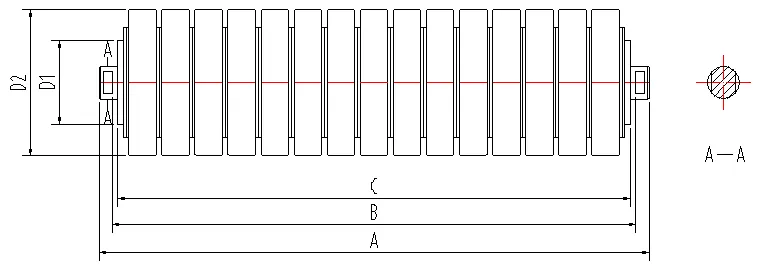 Afrikaans
Afrikaans  Albanian
Albanian  Amharic
Amharic  Arabic
Arabic  Armenian
Armenian  Azerbaijani
Azerbaijani  Basque
Basque  Belarusian
Belarusian  Bengali
Bengali  Bosnian
Bosnian  Bulgarian
Bulgarian  Catalan
Catalan  Cebuano
Cebuano  Corsican
Corsican  Croatian
Croatian  Czech
Czech  Danish
Danish  Dutch
Dutch  English
English  Esperanto
Esperanto  Estonian
Estonian  Finnish
Finnish  French
French  Frisian
Frisian  Galician
Galician  Georgian
Georgian  German
German  Greek
Greek  Gujarati
Gujarati  Haitian Creole
Haitian Creole  hausa
hausa  hawaiian
hawaiian  Hebrew
Hebrew  Hindi
Hindi  Miao
Miao  Hungarian
Hungarian  Icelandic
Icelandic  igbo
igbo  Indonesian
Indonesian  irish
irish  Italian
Italian  Japanese
Japanese  Javanese
Javanese  Kannada
Kannada  kazakh
kazakh  Khmer
Khmer  Rwandese
Rwandese  Korean
Korean  Kurdish
Kurdish  Kyrgyz
Kyrgyz  Lao
Lao  Latin
Latin  Latvian
Latvian  Lithuanian
Lithuanian  Luxembourgish
Luxembourgish  Macedonian
Macedonian  Malgashi
Malgashi  Malay
Malay  Malayalam
Malayalam  Maltese
Maltese  Maori
Maori  Marathi
Marathi  Mongolian
Mongolian  Myanmar
Myanmar  Nepali
Nepali  Norwegian
Norwegian  Norwegian
Norwegian  Occitan
Occitan  Pashto
Pashto  Persian
Persian  Polish
Polish  Portuguese
Portuguese  Punjabi
Punjabi  Romanian
Romanian  Russian
Russian  Samoan
Samoan  Scottish Gaelic
Scottish Gaelic  Serbian
Serbian  Sesotho
Sesotho  Shona
Shona  Sindhi
Sindhi  Sinhala
Sinhala  Slovak
Slovak  Slovenian
Slovenian  Somali
Somali  Spanish
Spanish  Sundanese
Sundanese  Swahili
Swahili  Swedish
Swedish  Tagalog
Tagalog  Tajik
Tajik  Tamil
Tamil  Tatar
Tatar  Telugu
Telugu  Thai
Thai  Turkish
Turkish  Turkmen
Turkmen  Ukrainian
Ukrainian  Urdu
Urdu  Uighur
Uighur  Uzbek
Uzbek  Vietnamese
Vietnamese  Welsh
Welsh  Bantu
Bantu  Yiddish
Yiddish  Yoruba
Yoruba  Zulu
Zulu idler and roller
Idler and Roller An Essential Duo in Mechanical Systems
In the realm of mechanical engineering and design, maintaining seamless operations is crucial for efficiency and performance. Among the various components that contribute to this goal, idlers and rollers play a pivotal role. These two elements may appear simplistic at first glance, yet they are fundamental in various applications, including conveyor systems, manufacturing machinery, and even in transportation. This article explores the functions, types, and significance of idlers and rollers in mechanical systems.
Understanding Idlers and Rollers
Idlers are components that do not drive or power a system but guide or support materials through a mechanism. They are typically free-rolling and are used predominantly in conveyor systems, where they facilitate the smooth movement of items by providing a surface for the material to slide over. Idlers help reduce friction and wear on the system, extending the life of both the conveyor belt and the materials being transported.
Rollers, on the other hand, may serve a more active role. While some rollers are designed to be idler rollers (meaning they do not drive the system), others are powered rollers that actively move materials. These powered rollers are crucial in applications where momentum is required, such as in roller tables or certain types of conveyor systems, where they work in tandem with motors to transport goods efficiently.
Types of Idlers and Rollers
Idlers and rollers come in various shapes, sizes, and materials, tailored to their specific applications
. Common types of idlers include1. Belt Idlers These are designed to support conveyor belts and ensure proper tension and alignment. They may be flat, crowned, or tapered, depending on the type of material and movement required.
2. Guide Rollers Often used in applications to keep materials aligned, these rollers help prevent materials from straying off the intended path, thereby enhancing safety and efficiency.
3. Return Rollers These are used in conveyor systems to support the return side of the belt. They help in maintaining belt tension and reducing wear on the belt.
idler and roller

4. Snub Rollers Employed mainly to change the direction of a conveyor belt, snub rollers provide additional tension and help with the transfer of materials between conveyor sections.
Rollers can also vary in their construction, with options ranging from steel and plastic to rubber-coated variations. The material choice often depends on the specific application requirements, such as load capacity, environmental factors, and the nature of the materials being transported.
Significance in Mechanical Systems
The significance of idlers and rollers cannot be overstated. They contribute to the overall efficiency and performance of mechanical systems in several ways
1. Reduced Friction By providing a smooth surface for materials to move against, idlers and rollers significantly reduce friction, leading to lower energy consumption and less wear on both the machines and the materials being transported.
2. Enhanced Durability Idlers and rollers are designed to withstand significant operational stresses. By selecting high-quality materials and appropriate designs, engineers can ensure that these components will endure prolonged use, minimizing the need for regular replacements.
3. Increased Productivity The effective functioning of idlers and rollers is vital for maintaining the flow of materials, which directly impacts productivity levels. Manufacturers can achieve higher throughput with efficient idler and roller systems.
4. Safety Properly installed and maintained idlers and rollers can significantly reduce the risk of accidents in manufacturing and logistical settings. They help maintain the stability of heavy loads, preventing hazards associated with material spillage or equipment failure.
Conclusion
In conclusion, idlers and rollers may seem like simple components in the machinery landscape, yet their roles are integral to the functionality and efficiency of mechanical systems. As technology advances, the designs and materials used for these components continue to evolve, further enhancing their capabilities. Whether in a manufacturing facility, a warehouse, or any industrial setting, idlers and rollers are indispensable in ensuring smooth operations, safety, and productivity. As industries grow and innovate, the importance of these components remains unwavering, solidifying their place as essential gears in the machinery of modern engineering.
-
Revolutionizing Conveyor Reliability with Advanced Rubber Lagging PulleysNewsJul.22,2025
-
Powering Precision and Durability with Expert Manufacturers of Conveyor ComponentsNewsJul.22,2025
-
Optimizing Conveyor Systems with Advanced Conveyor AccessoriesNewsJul.22,2025
-
Maximize Conveyor Efficiency with Quality Conveyor Idler PulleysNewsJul.22,2025
-
Future-Proof Your Conveyor System with High-Performance Polyurethane RollerNewsJul.22,2025
-
Driving Efficiency Forward with Quality Idlers and RollersNewsJul.22,2025





























